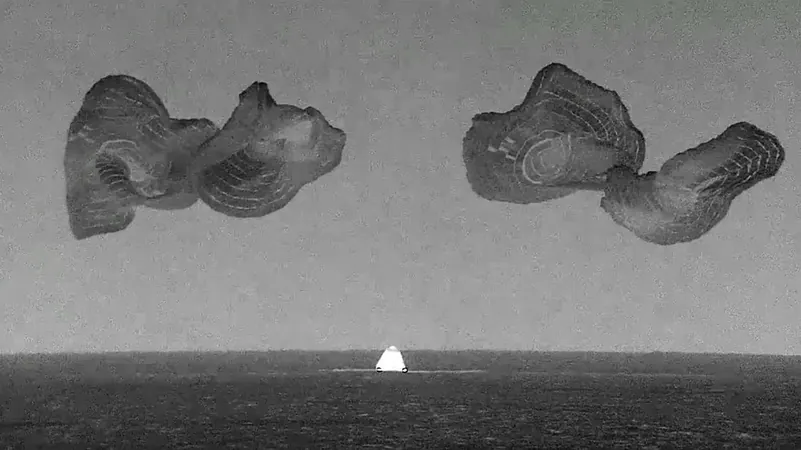
Historic Polaris Dawn Mission Concludes with Successful SpaceX Dragon Splashdown
2024-09-17
In a remarkable achievement for private space travel, the SpaceX Dragon spacecraft splashed down early Sunday morning off the Florida coast, marking the end of the groundbreaking Polaris Dawn mission. This mission not only set records but also included the first-ever private astronaut spacewalk, pushing the boundaries of commercial space exploration.
The Polaris Dawn mission, led by billionaire entrepreneur Jared Isaacman, launched on a Falcon 9 rocket last Tuesday and reached altitudes that no humans had accessed in over fifty years. After a five-day journey, the crew returned to Earth at 3:36 a.m. ET, landing near the Dry Tortugas, a picturesque archipelago located about 70 miles from Key West in the Gulf of Mexico.
Isaacman was joined by a diverse team of private astronauts including retired U.S. Air Force Lieutenant Colonel Scott “Kidd” Poteet and SpaceX engineers Sarah Gillis and Anna Menon, who also served as the crew's medical officer. Their mission was significant as it represented not only the culmination of SpaceX's efforts to democratize space travel but also a new era in which private citizens can engage in missions that were once the exclusive domain of government agencies.
During their time in space, the Polaris Dawn crew accomplished several historic milestones. They soared to a staggering height of 870 miles above the Earth, surpassing any crewed mission since the last Apollo flights in the 1970s. This elevation is a testament to SpaceX's innovative capabilities and marks a leap forward for commercial space ventures.
On Thursday, in a moment that will be etched in the annals of history, Isaacman and Gillis conducted a spacewalk, becoming part of the first-ever crew of non-professional astronauts to do so. This spacewalk was not just a thrilling experience; it served as a test for new space suits designed by SpaceX, which aimed to provide astronauts with protection against radiation and extreme temperatures.
Throughout their mission, the crew also tested a cutting-edge laser-based communication system using SpaceX's Starlink satellite network and conducted nearly 40 scientific experiments. These experiments are pivotal in understanding human physiology during long-duration spaceflights, which is crucial as NASA and other agencies prepare for missions to Mars.
The Polaris Dawn mission is just the first of three missions under the expansive Polaris Program, which is set to further explore the possibilities of human spaceflight. The next mission is expected to continue pushing the boundaries of in-space research and technology, although specific details about launch dates remain under wraps.
Looking ahead, the final mission under the Polaris Program aims to be the first human flight aboard SpaceX's Starship rocket. This ambitious vehicle, which recently completed successful uncrewed tests, is envisioned to play a pivotal role in NASA's Artemis program, facilitating lunar missions and eventually paving the way for crewed flights to Mars.
SpaceX's endeavors, supported by a significant investment from NASA—$2.9 billion for the development of Starship—highlight the growing partnership between private industry and government space exploration efforts. As we stand on the brink of a new era in space exploration, the success of the Polaris Dawn mission is a promising sign for the future of human space travel.
Stay tuned as we continue to follow the developments in the Polaris Program and the exciting prospects it holds for the future of space exploration!



 Brasil (PT)
Brasil (PT)
 Canada (EN)
Canada (EN)
 Chile (ES)
Chile (ES)
 España (ES)
España (ES)
 France (FR)
France (FR)
 Hong Kong (EN)
Hong Kong (EN)
 Italia (IT)
Italia (IT)
 日本 (JA)
日本 (JA)
 Magyarország (HU)
Magyarország (HU)
 Norge (NO)
Norge (NO)
 Polska (PL)
Polska (PL)
 Schweiz (DE)
Schweiz (DE)
 Singapore (EN)
Singapore (EN)
 Sverige (SV)
Sverige (SV)
 Suomi (FI)
Suomi (FI)
 Türkiye (TR)
Türkiye (TR)